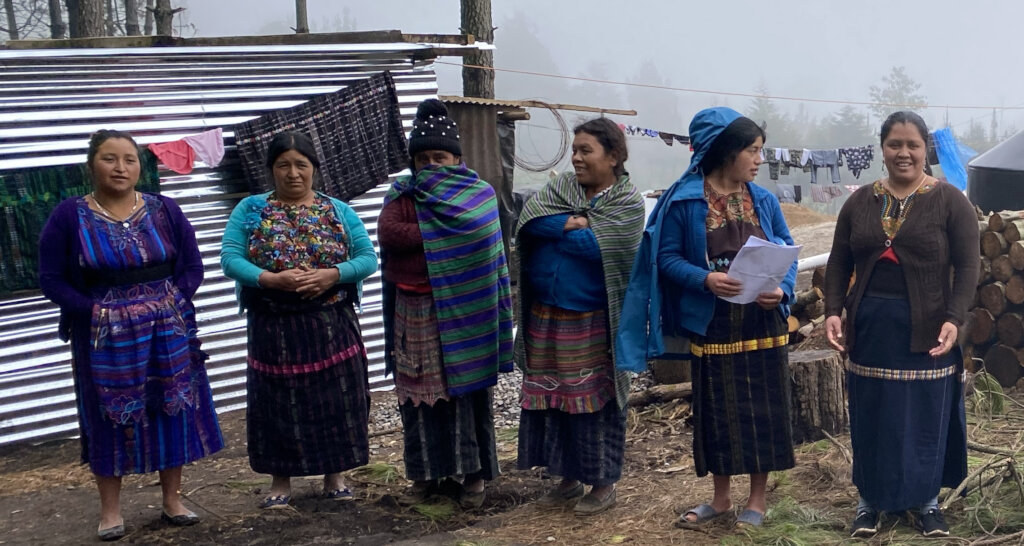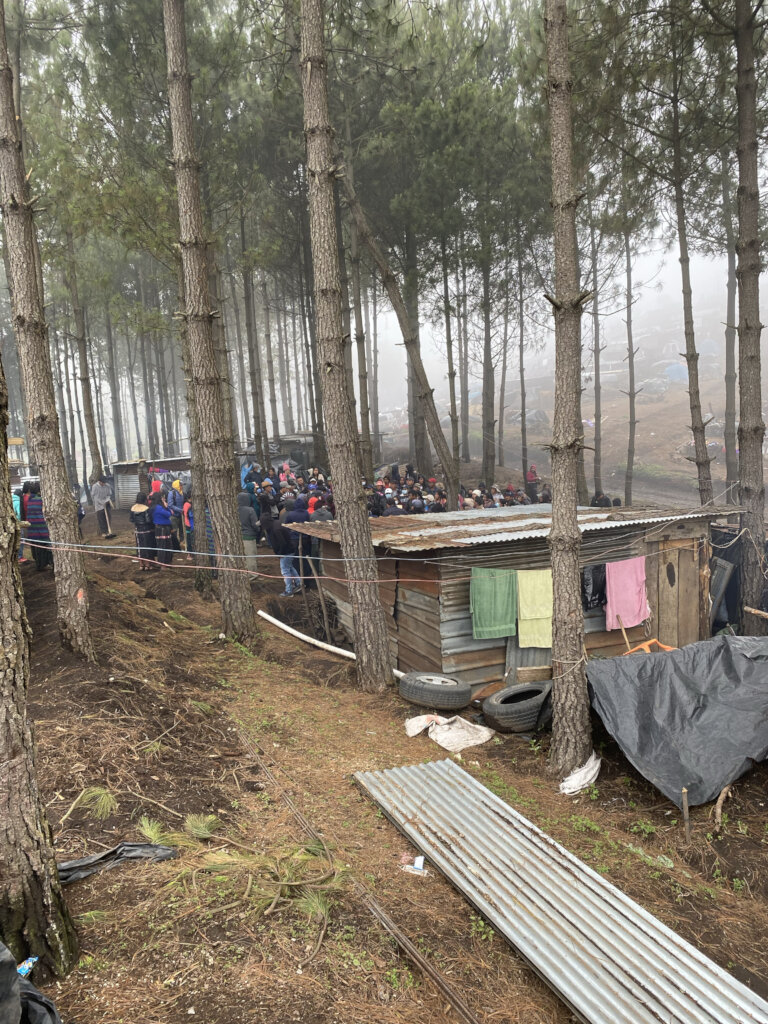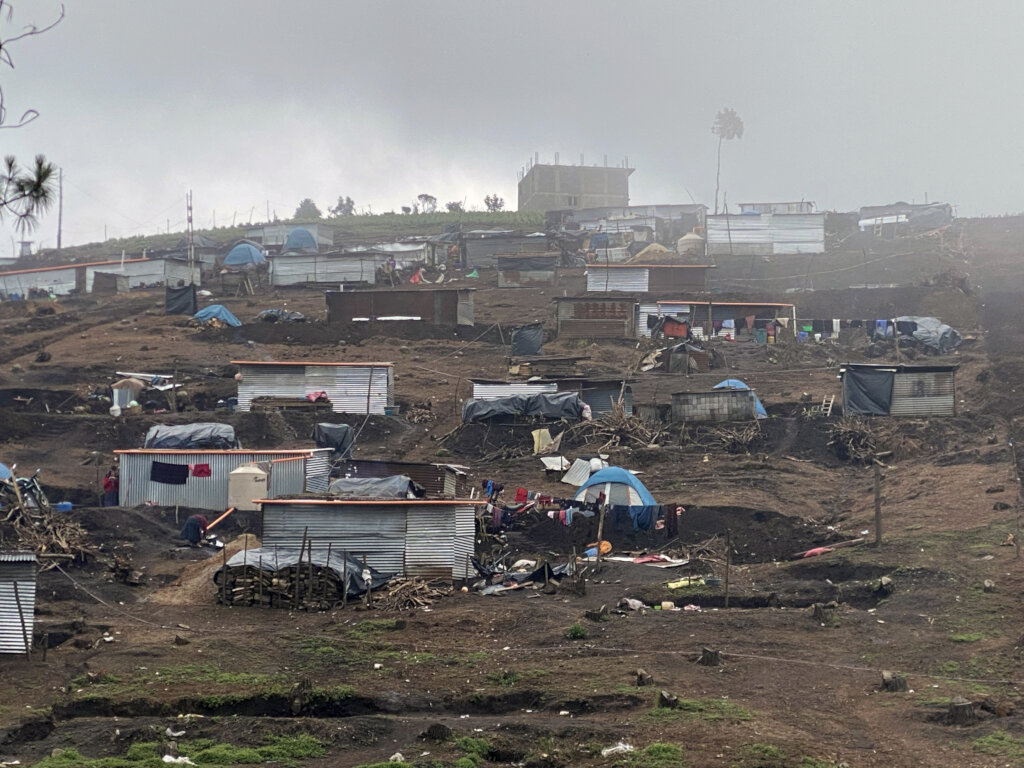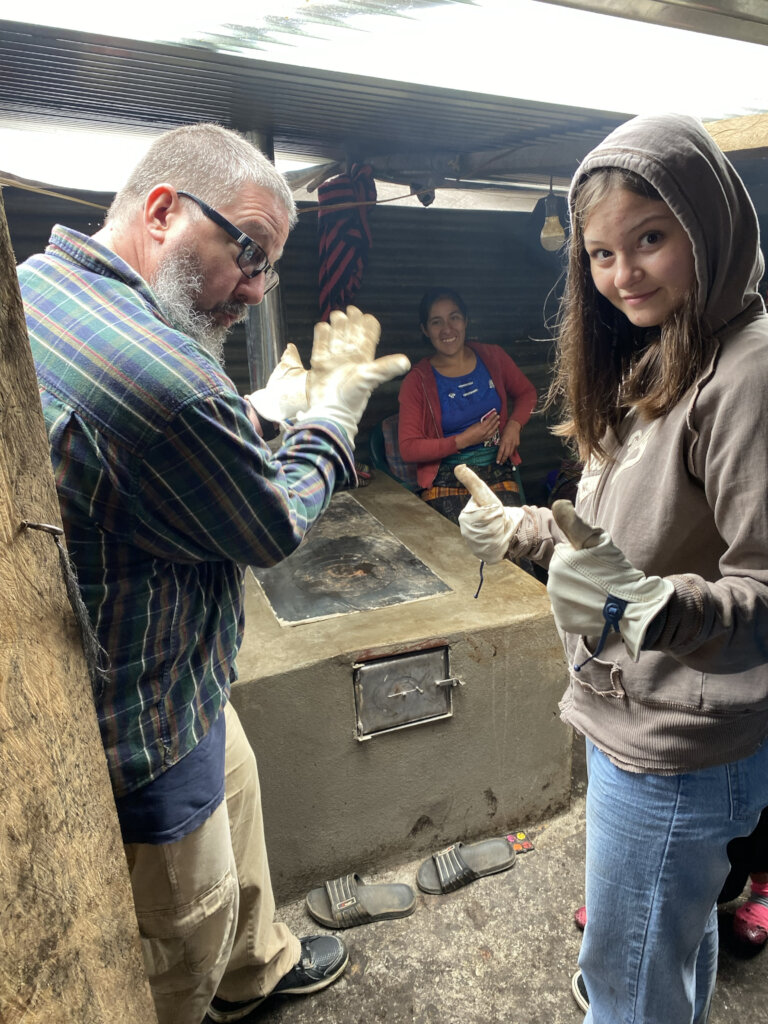By Guadalupe Ramirez | Community Organizer
The Highland Support Project (HSP) and the Association of Highland Women (AMA) have been the primary organizations supporting the relocation of two communities forced to migrate because of land and water access conflicts. Last November, the friction produced a dozen fatalities and necessitated over 1500 people to flee the region to relocate with other members of their kinship grouping three hours away. The families had experienced repeated armed attacks on their villages, the destruction of their livestock and field, and other forms of harassment.
HSP and AMA partnered to provide the nearly 200 families of Tzanjuyub and Pasquach behavioral health services through the circle programming and critical health infrastructure. We are networking with other organizations to construct homes, a new school, and water and sanitation projects. During the last three months, the partnership has built 50 stoves to evacuate smoke from the temporary shelters. We have obtained a commitment from Otterbein United Methodist Church in Harrisonburg, Virginia, to fund the installation of critical water and hygiene infrastructure.
Background of the situation.
The typically quiet and isolated region of Santa Catarina Ixthueacan and Nahualá has found its way into international newspapers over the last month. An explosion of violence includes the December massacre of thirteen people, including four children between the ages of 5 and 16, from Santa Catarina that were visiting the village of Chiquix in Nahualá to harvest corn. The latest episodes of civil unrest have roots in the past, aggravated by the inequalities of colonialism, migration, international drug trafficking, and the pandemic.
The two communities have centuries of shared history originating from a shared amaq'. Amaq' is the intermediary level of K'iche' social organization, comprising various calpul - extended family networks -controlling specific territory. The confederation of different amaq' in the period before the Spanish conquest formed the K'iche' winaq - state or empire - of Q'umarkaj (Diego Vásquez Moterrose, 2019). Chronicles of the region demonstrate a complex relationship between the groups, with outsiders typically viewing the communities as a unified group. At the same time, there is a clear differentiation and refusal to be subordinated internally.
The Roots of Conflict
Weisshaar and Hostnig's (1995) compilation of local oral traditions chronicles hostilities between Ixthueacan and Nahula following the reducción - the Spanish colonial policy of concentrating Indigenous populations dispersed throughout a region into new colonial centers developed to conform with European standards. The Spanish combined the communities of Sija - later named Santa Katarina Ixthueacan - and Mutzula, identified in The Annals of the Kaqchiqueles - an Indigenous document from the XVI century - as the people identified as Nahualá.
In 1876, Miguel Salquill rose to be the governor of Santa Catarina Ixtahuacan. According to the oral stories of Nahualá, he instituted the practice of having marimba -dance music - every Sunday and Thursday and introduced many vices such as heavy drinking and obligating women to dance. Because of this behavior, Manuel Tzoc, a leader of the Nahualá families, relocated to Xepatuj - the current location of Nahualá - and was named Manuel Tzoc as the community leader. Mr. Tzoc began to criticize publicly and privately Miguel Salqui. These conflicts developed into a prolonged enmity (Carrillo, 2011). Informants from Santa Katarina offer an opposing version of events suggesting that the families related to Tzoc utilized economic power and political relations with the state at their expense without the noble motives indicated in the accounts of Nahualá.
The conflict between Salquill and Tzoc continued to intensify when a tremor visibly damaged the primary church of Santa Catarina Ixtahuacan. Salquill wished to repair the parish, while Tzoc wanted to demolish the building and construct a new one. After a series of confrontations, Salquill summed Manuel Tzoc to a meeting with the elders concerning the church (Carrillo, 2011). Oral traditions recount how Miguel Salquill and other elders interrogated Manuel Tzoc about the willingness of his people to assist in the church reparations. Tzoc responded that he would not accept help if it was only to be repaired and said, "Are we not men enough to do a job well done?" (Carrillo, 2011).
After the response of Tzoc to the elders of Santa Katrina, the people opposed him and said that because he had become wealthy from the wheat mill, he wished to order people around, but they would not accept his ideas. When the town leaders called for him to be exiled, and after there was no resolution, the conflict intensified into armed conflict. The confrontations became so bloody and intense that the government of General Barrios intervened to declare the separation between Nahualá and Santa Catarina Ixtahuacán.
While other communities in Guatemala left the reduction period as unified communities with a vague memory of different origins, Nahualá and Santa Catarina Ixtahuacán clearly remember their long history. " "Unlike others, these were very large, densely populated, and relatively wealthy communities, which had more trade and were unwilling to give up power" (Brooks, para 10, 2021).
The buffer zone between the two communities continued to shrink over the last century with a dramatic increase in the population of both communities. Then, in 2009 Hurricane Mitch necessitated the relocation of Santa Catarina to the area Chwi Pataa - nicknamed "Alaska" by a North American Catholic priest who worked in Nahualá during the 1960s - located in the middle of Nahualá. A rather simplistic description of the context is that the land once belonged to Santa Catarina and the government of Justo Barrios ceded the territory to Nahualá. Then in 2009, the Guatemalan government decided to return the land to Santa Catarina. In both instances, the boundaries and the land registry have been incomplete, leading to conflict.
The Role of Migration in the Conflict
The current rate charged by human smugglers to bring people to the United States is $16,000.00. With limited employment opportunities, weak domestic markets, and the lack of water and quality topsoil for farming, migration to earn dollars is viewed by many as the only option for survival. Families are mortgaging land to obtain the funds, creating a series of conflicts because these lands are communal lands that cannot be sold or transferred. A family belonging to the community may have the right to farm or occupy a specific parcel of land. They can exchange it with others in the community, but they cannot sell it to outsiders. Therefore, the ability to have rights to a particular parcel of land depends on which community claims that land. This arrangement is provoking armed conflict between money lenders and indebted families. The salient issue is that the tapestry of intermingled land settlements and conflicting land titles has created a volatile situation pitting communities against each other.
HSP's Response
The Highland Support Project has provided material and housing assistance to community members forced to relocate during the conflict. HSP's sister organization, the Association of Highland Women, has continued to organize circle meetings, uniting women across identity boundaries and providing counseling and shared market access through the Pixan social enterprise.
If you wish to collaborate in the efforts to assist these communities to rebuild lives of dignity, security and hope, we can networking to assist with the construction of homes, a school, clinic, and wash projects.
References
Carrillo, C. 2011. Costos y rentabilidad de unidades agroindustriales (beneficiado húmedo de café) (en línea). Informe EPS. Guatemala, Universidad de San Carlos de Guatemala, Facultad de Ciencias Económicas. Consultado 8 mar. 2016. Disponible en http://biblioteca.usac.edu.gt/EPS/03/03_0762_v3.pdf
Weisshaar, Emmerich and Hostnig, Rainer. 1995 Erzählungen der Maya-Indianer Guatemala's vom Stamme der Quiché. Versión en alemán
Project reports on GlobalGiving are posted directly to globalgiving.org by Project Leaders as they are completed, generally every 3-4 months. To protect the integrity of these documents, GlobalGiving does not alter them; therefore you may find some language or formatting issues.
If you donate to this project or have donated to this project, you can receive an email when this project posts a report. You can also subscribe for reports without donating.
Support this important cause by creating a personalized fundraising page.
Start a Fundraiser



